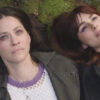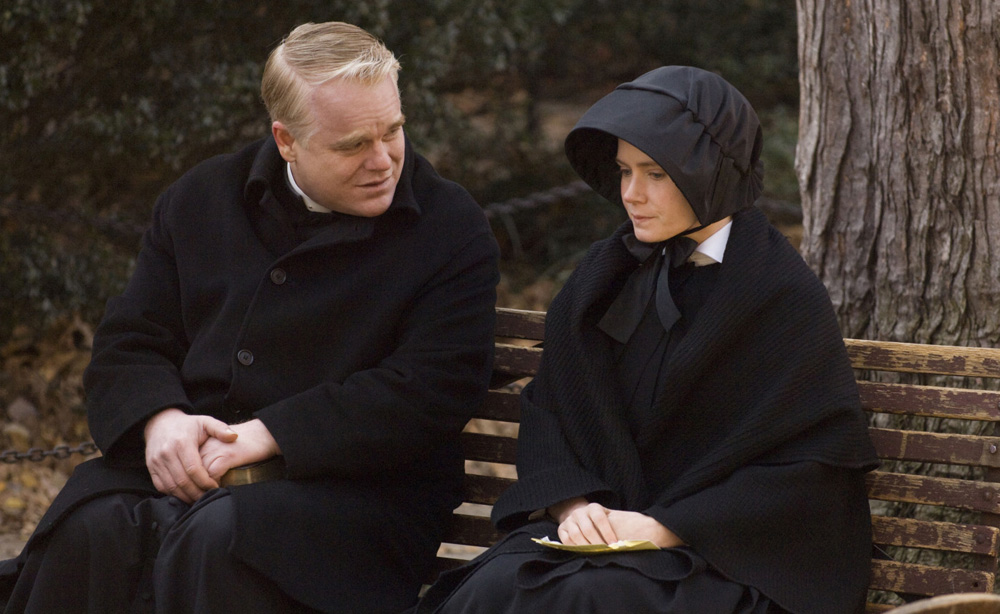In honor of a retrospective screening of John Patrick Shanley’s wonderful and underappreciated feature debut “Joe Versus the Volcano” at the IFC Center in New York this week, we’re revisiting this piece, originally published on December 12, 2008, about its effect on the celebrated film adaptation of his Pulitzer Prize-winning play “Doubt.”
In the Playbill for “Doubt,” playwright John Patrick Shanley left out his Oscar for “Moonstruck” and the highlights from his considerable stage career to shine a light on some of his earlier achievements, noting “He was thrown out of St. Helene’s kindergarten, banned from St. Anthony’s hot lunch program and expelled from Cardinal Spellman High School.” Shanley’s exit from Hollywood for the New York stage 18 years ago wasn’t nearly as dramatic, following the disappointment of his directorial debut “Joe Versus the Volcano,” but it was nonetheless a great loss for the movie business to be robbed of the writer/director just as he was coming into his prime.
So it’s no minor thing that Shanley has returned to direct a film adaptation of his Pulitzer Prize-winning play, “Doubt,” a linguistically taut battle of wits between Father Flynn (Philip Seymour Hoffman), a progressive priest accused of wrongdoing and his accuser, a steadfast nun named Sister Aloysius (Meryl Streep), at a Catholic School in the Bronx in 1964. Days after a screening of the film and a post-screening Q & A where the mere mention of the once-maligned “Joe” brought thunderous applause, Shanley spoke about the trickiness of adapting modern plays into films and the parallels between “Doubt” and the recent presidential election.

I did “Joe Versus the Volcano” 18 years ago, and then I was just spiritually exhausted. I’d been working nonstop for 15 years. I’d been living in a hotel out [in Los Angeles] for ten months doing the movie. I went home and I knew that it was going to take me a significant amount of time to regroup, that I didn’t know what I really wanted to write about next. I needed to attend to my real life. [Producer] Scott Rudin came to me and said “I want to do another film with you,” and Jeffrey Katzenberg said the same thing. And I said no, I don’t want to.
I adopted two children, then I got eye disease and five rounds of surgery. I went blind in one eye, then the other eye, and that went on for three or four years. I got very enamored and involved with the theater and did a lot of plays. It wasn’t until I did “Doubt” and Scott Rudin came to me and said, again, “I think we should make this as a film and I think you should direct it” and I said, I think you’re right. And it turned out it was 18 years later.
Did the reception of “Joe Versus the Volcano” shake your confidence?
Oh, certainly, but confidence isn’t my main thing, fortunately. I just needed to figure out what I wanted to write about. I needed to live. You have to live in order to have something to write about — you get caught up in moviemaking and celebrities and money and it’s very intoxicating, but it doesn’t give you what you need as a writer. You have to do something else for that.
I haven’t actually said this to anybody, but the real link between “Joe” and “Doubt” is I leave significant room for the audience. It’s like you’re bringing something to this scene and I want you to go ahead and field the invitation. With “Joe,” I would take time, let a scene play. It was like, you’re going to start with one thing with this scene, but I’m going to give you a chance to feel and think something else.
The strength of “Doubt” as a play was how economical it was, not only in its dialogue, but in its spare staging and concentration of four characters. Were you surprised how cinematic this turned out to be?
This is the most difficult screenplay I’ve ever written, by far, the toughest page to page, finding the solution to the problem of using the materials of film to tell the story. I got to page 50 and I hated every page that I wrote. And I never do. I think that I’m delighted by what I write and I was not in this case. Then I wrote this scene with the woman cutting open the pillow and the feathers [the subject of Father Flynn’s second sermon on gossip] and I thought, that’s cinematic, and suddenly there was hope.
It’s a tough nut to crack. Modern plays don’t translate easily into films because there are very few characters. If you go back and you look at “Inherit the Wind,” there’s a million people in the play. [Same with] “Streetcar Named Desire,” “The Miracle Worker,” “Of Mice and Men” — there are many, many characters and a feeling of real space in the plays and you could exploit that as a film, whereas this was four characters and a couple of locations. You have to realize that as a playwright, you’ve hypnotized yourself into a level of austerity that you can now dispose of.

I use color all through the film. The principal’s office is an incredibly powerful green. The nuns’ sitting room where Sister Aloysius asks the young nun what she’s seen [regarding Father Flynn’s wrongdoing], there’s a sort of Virgin Mary blue, a very, very powerful blue. The meat is very red. And then the outside is very atonal, very gray and these are sort of things that crash into each other and part of the intent is to wake you up. It’s like “oh, look, it feels different now. It feels different again.” And there’s a psychological impact the color has that I’ve spent my whole life thinking about that I employ in the film.
Speaking of reds and blues, the play seemed especially potent because it was staged in 2005 at a time when moral certitude seemed to be a prevailing cultural attitude cultivated by the Bush administration, but the movie is arriving after a presidential election where such righteousness was clearly challenged — do you think the meaning of your work has changed?
The play and the film are set in 1964, which is a time of great change, but still a quiet time. Certainly in that neighborhood, that blue collar enclave, it was quiet. But you could hear over the hill a great noise and that was the ’60s coming to change everything. And things were going to get louder and louder. Sister Aloysius is like a commander on a beat-up old submarine who keeps trying to plug up one leak, then a fresh one will spring up with the lights going out — she’s battling the future and she’s going to lose. And that’s the biggest battle that she’s fighting. Not the priests, but the future itself. She knows things that are precious to her are going to be lost.
We are again in such a time where people have been talking louder and louder until we reached a point in the zeitgeist where we’re exhausted with posturing and people posing as debaters who are in fact just in a power struggle. That’s now come to an end and people are dusting themselves off and going, we need to talk to each other. We need real public discourse. We’re not trying to overturn the others, we allow ourselves to be changed by other points of view, be affected by other points of view. So I think it’s very timely that the film’s coming out now because it’s an echo of that earlier time in reverse. Things that were lost then may be coming back now.
So, does getting kicked out of school when you’re younger prepare you well for the movie business?
Oh, I’m sure. I’ve done very well in the film business. Whenever I have wanted something, the film business has given it to me. I’m very fortunate. My big problem in life has always been what do I want? And a lot of the time, [there was] nothing that the film business could give me that would help me, of the struggles and the concerns. Just life itself, you know? Trying to lead an interesting life, a fruitful life is a big challenge.




